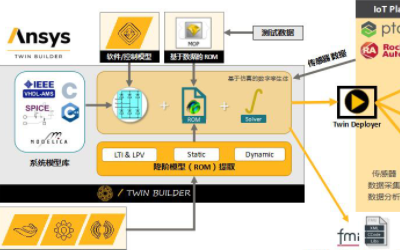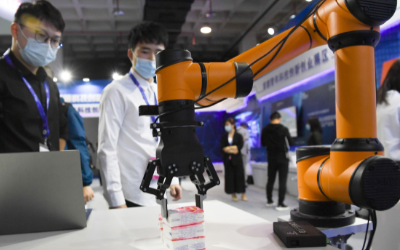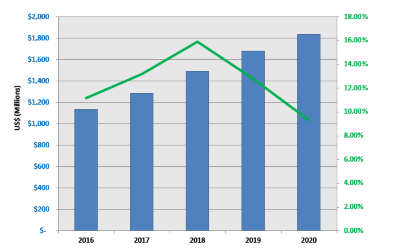China Mobile Jumps Ahead of Domestic Rivals to Develop 4G on Home Ground
An ongoing effort by China Mobile to develop local 4G wireless infrastructure ahead of its two other rivals is likely to pay off down the road, with the operator's own subscribers projected to account for more than half of total 4G users in that vast East Asian country by 2017, according to an IHS iSuppli China Research topical report from information and analytics provider IHS.
The number of China Mobile 4G subscribers is forecast to reach 228.8 million in four years' time, or 52 percent of China's 439.9 million 4G users by 2017. In comparison, 4G users from China Unicom and China Telecom - the country's two other major telecommunications operators - will number 114.4 million and 96.8 million, respectively.
While 4G will become the dominant wireless standard this year in areas like North America and Europe, the next-generation wireless standard is only starting to make its way in China, with China Mobile spearheading the effort. The 4G footprint will make its first appearance in China this year with a total of 1.0 million subscribers - all to be claimed by China Mobile. The head start enjoyed by China Mobile extends to a comfortable margin next year as it counts 14.0 million 4G subscribers, compared to 4.3 million for China Unicom and 3.2 million for China Telecom. By 2015, China Mobile will have a near-insurmountable lead with 55.1 million 4G subscribers - 34.2 million more than China Unicom, its closest competitor.
China's 4G technology is known as TD-LTE, or Time-Division Long Term Evolution - a homegrown variant of the worldwide LTE standard. The country deploys its own wireless norm, ostensibly to lessen dependence on the West.
For China Mobile, its 4G effort dates to March 2011, when the first phase of the operator's TD-LTE trial launched in six cities, including Shanghai. A total of 1,210 base stations were provided by 11 equipment vendors to install the communication posts for wireless networks.
The second phase of the trial then started in October of the same year with the addition of three more cities, including the country's capital of Beijing. An important aim of the second phase, which sought to deploy another 10,000 base stations, was to test equipment that would eventually allow China Mobile to do a smooth upgrade from older 3G TD-SCDMA to 4G TD-LTE.
Building on the success of its trial networks in 2011, China Mobile installed another 20,000 TD-LTE base stations in 2012. By the end of this year, the operator will have deployed a total of TD-LTE 200,000 base stations in order to accommodate the use of smartphones and other mobile data devices by the local population.
China Mobile's early start on 4G ahead of its rivals may appear to be prescient, but the operator is actually making up for stumbles in its previous 3G rollout for smartphones. China Mobile at that time had chosen to deploy wireless local area networks to support the explosive growth of data traffic, but that move only supported PC and laptop users. Meanwhile, rivals China Unicom and China Telecom opted instead to deploy 3G cellular infrastructure, which served to better accommodate data traffic coming from smartphones and also helped to generate high-value-add revenue. While China Telecom's data traffic per handset user reached an average of 285 megabytes, data traffic per handset user for China Mobile amounted to a dismal 31 megabytes.
Under intense pressure, China Mobile then moved quickly to accelerate the progress of TD-LTE, especially in hopes of putting a difficult period behind. That effort is now well underway, with China Mobile having spent an estimated $1.5 billion to build its two trial networks and deploy all those base stations.
The modernization attempt as a whole will continue in the next few years, even though vast parts of the Chinese population can only access 3G, with even older 2G wireless technologies also still extant. By 2017, a total of 600,000 TD-LTE base stations will be deployed by China Mobile, compared to 400,000 for China Telecom and 300,000 for China Unicom, IHS iSuppli predicts.
While 4G will become the dominant wireless standard this year in areas like North America and Europe, the next-generation wireless standard is only starting to make its way in China, with China Mobile spearheading the effort. The 4G footprint will make its first appearance in China this year with a total of 1.0 million subscribers - all to be claimed by China Mobile. The head start enjoyed by China Mobile extends to a comfortable margin next year as it counts 14.0 million 4G subscribers, compared to 4.3 million for China Unicom and 3.2 million for China Telecom. By 2015, China Mobile will have a near-insurmountable lead with 55.1 million 4G subscribers - 34.2 million more than China Unicom, its closest competitor.
China's 4G technology is known as TD-LTE, or Time-Division Long Term Evolution - a homegrown variant of the worldwide LTE standard. The country deploys its own wireless norm, ostensibly to lessen dependence on the West.
For China Mobile, its 4G effort dates to March 2011, when the first phase of the operator's TD-LTE trial launched in six cities, including Shanghai. A total of 1,210 base stations were provided by 11 equipment vendors to install the communication posts for wireless networks.
The second phase of the trial then started in October of the same year with the addition of three more cities, including the country's capital of Beijing. An important aim of the second phase, which sought to deploy another 10,000 base stations, was to test equipment that would eventually allow China Mobile to do a smooth upgrade from older 3G TD-SCDMA to 4G TD-LTE.
Building on the success of its trial networks in 2011, China Mobile installed another 20,000 TD-LTE base stations in 2012. By the end of this year, the operator will have deployed a total of TD-LTE 200,000 base stations in order to accommodate the use of smartphones and other mobile data devices by the local population.
China Mobile's early start on 4G ahead of its rivals may appear to be prescient, but the operator is actually making up for stumbles in its previous 3G rollout for smartphones. China Mobile at that time had chosen to deploy wireless local area networks to support the explosive growth of data traffic, but that move only supported PC and laptop users. Meanwhile, rivals China Unicom and China Telecom opted instead to deploy 3G cellular infrastructure, which served to better accommodate data traffic coming from smartphones and also helped to generate high-value-add revenue. While China Telecom's data traffic per handset user reached an average of 285 megabytes, data traffic per handset user for China Mobile amounted to a dismal 31 megabytes.
Under intense pressure, China Mobile then moved quickly to accelerate the progress of TD-LTE, especially in hopes of putting a difficult period behind. That effort is now well underway, with China Mobile having spent an estimated $1.5 billion to build its two trial networks and deploy all those base stations.
The modernization attempt as a whole will continue in the next few years, even though vast parts of the Chinese population can only access 3G, with even older 2G wireless technologies also still extant. By 2017, a total of 600,000 TD-LTE base stations will be deployed by China Mobile, compared to 400,000 for China Telecom and 300,000 for China Unicom, IHS iSuppli predicts.








